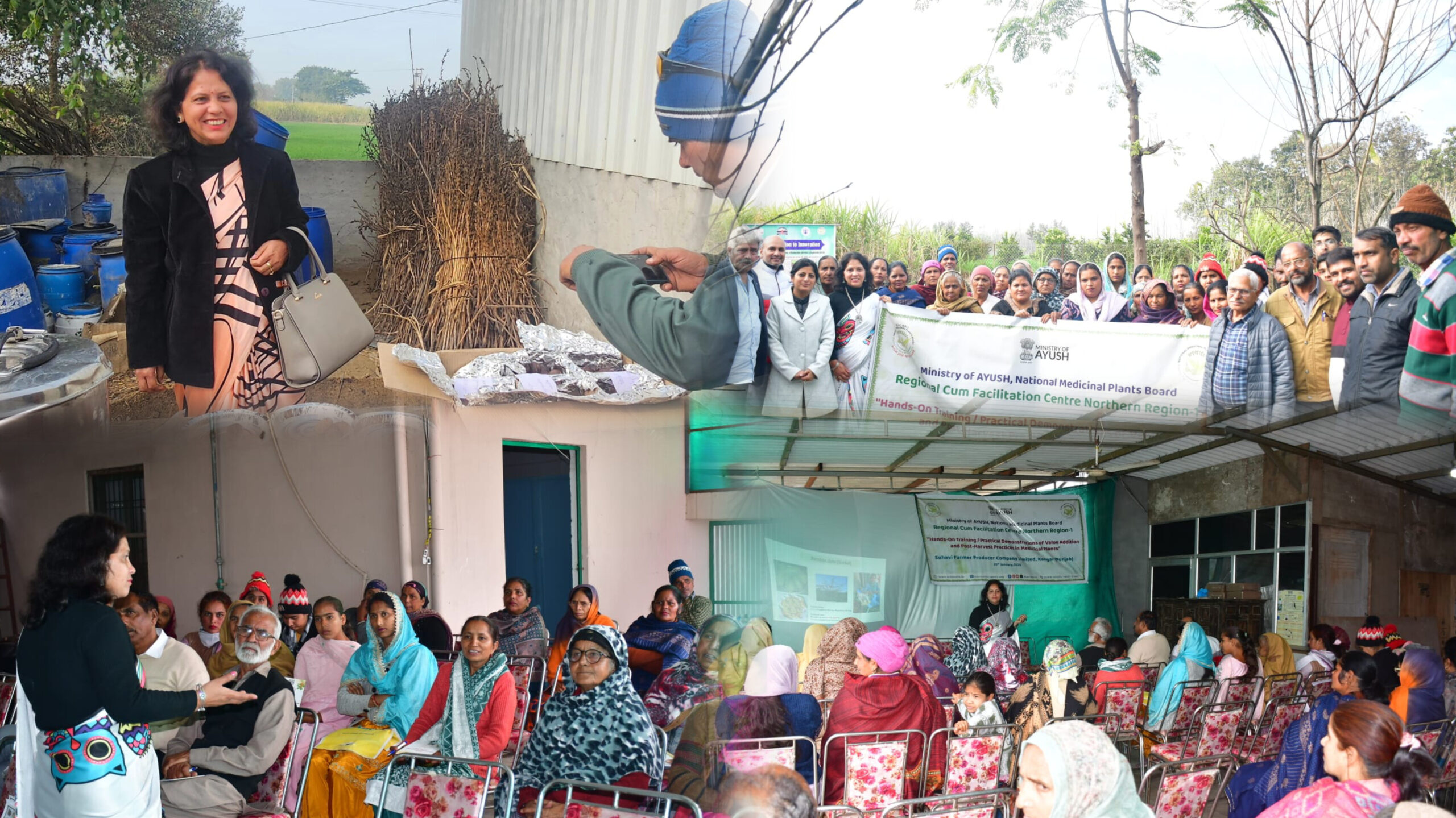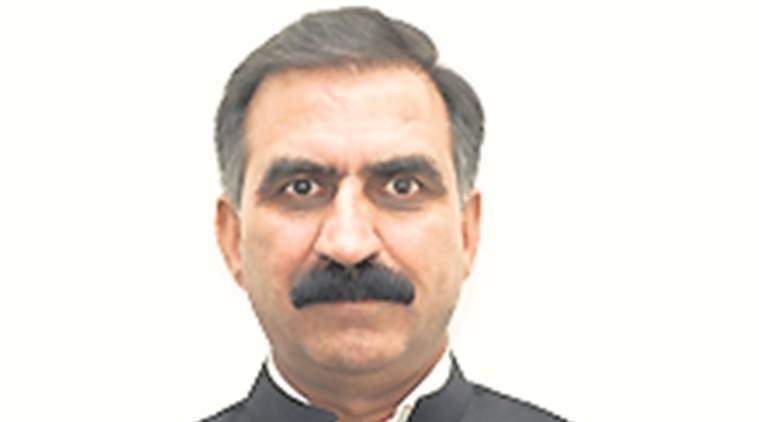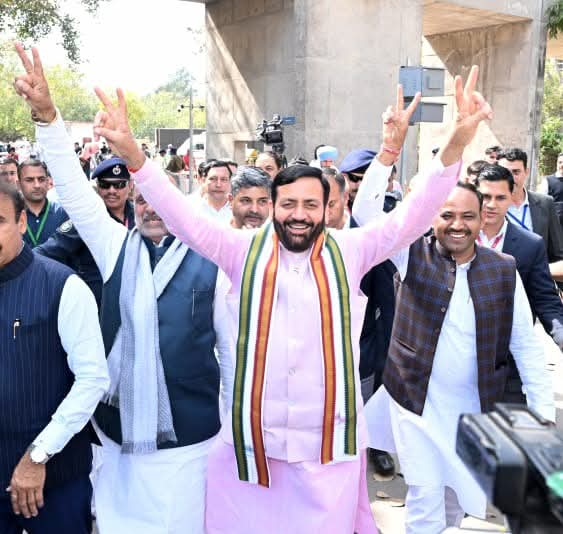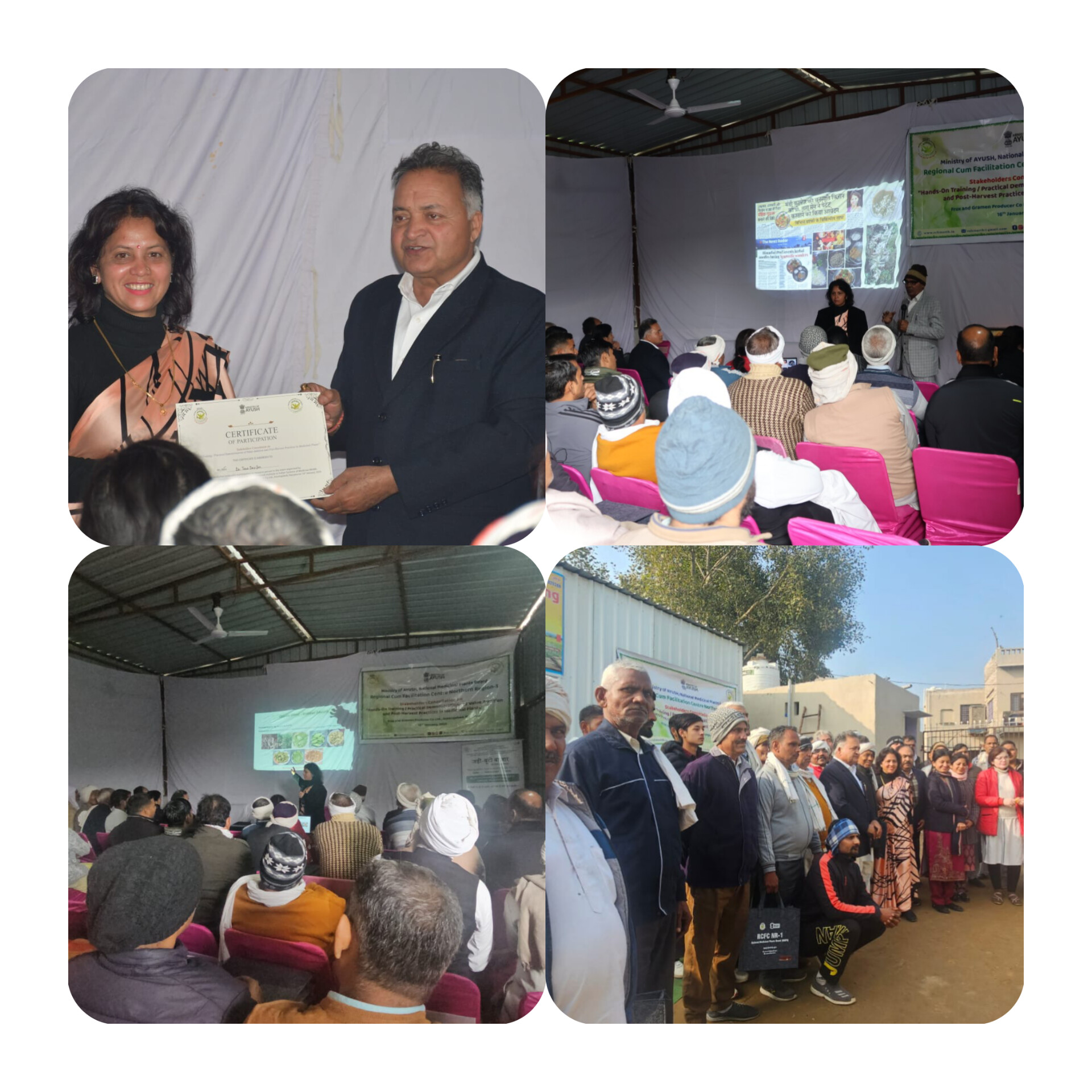Reviving Medicinal Knowledge Across States: A Journey Through Farmer Training in Haryana, Uttar Pradesh, and Punjab. Dr. Tara Devi Sen.

Shimla:
Recently, I had the privilege of serving as a domain expert in a series of one-day hands-on training sessions on “Value Addition and Post-Harvest Practices in Medicinal Plants” for farmers across three states—Palwal (Haryana), Mathura (Uttar Pradesh), and Nurpur Bedi (Punjab). Organized by RCFC-NR Jogindernagar, a regional center of the National Medicinal Plants Board, these programs aimed to integrate medicinal wild food plants into daily life while equipping farmers with knowledge of value addition techniques for livelihood promotion.
The foundation for these training programs was laid during our previous interactions on November 12-13, when representatives of these farmers expressed a keen interest in learning about local medicinal wild food plants and their incorporation into daily life.
Dr. Arun Chandan, Regional Director of RCFC, encouraged me to go beyond a conventional lecture format and demonstrate recipes. This presented a unique challenge: crafting value-added recipes using medicinal plants that thrive in all three states and are easily accessible to farmers. I devised innovative recipes incorporating millets and medicinal wild food plants and requested Dr. Arun to serve these dishes to farmers as refreshments after tasting samples.
I was grateful for the enthusiastic participation of Self-Help Groups (SHGs) from Gohar and Sundernagar, who played a vital role in preparing these recipes, which were highly appreciated and became a highlight of the sessions. Some of the innovative recipes introduced included millet laddus and biscuits enriched with Mucuna, Ashwagandha, Shatavari, and Giloy. Their videos were shared with the farmers. This initiative truly embodied the ‘local for global’ philosophy. Additionally, we introduced badiyan (dried dumplings) made with wild medicinal greens such as:
Tardi-mah-Giloy
Tardi-mah-Moringa
Tardi-moong-Watercress
These traditional flavors were brought to the forefront, reinforcing the cultural significance of these plants.
Haryana: A Village-Centric Learning Experience

The training commenced on January 16 in Palwal, Haryana, and stood out due to its village-centric approach. Unlike formal venue workshops serving standard refreshments, this session embraced local flavors and health-conscious practices. The farmers’ deep knowledge of medicinal plants was remarkable, highlighting their strong connection to traditional wisdom.
One of the most memorable moments was a humorous yet touching interaction with a farmer. He earnestly requested my visiting card and was surprised that I didn’t carry one. Instead, he insisted on writing my phone number in his diary and warmly invited me to his village to conduct similar training for women farmers. As a gesture of hospitality, he initially offered me 250g of desi ghee, later increasing the offer to include honey as well. Although my professional commitments made such visits difficult, the experience reaffirmed the importance of direct engagement with farming communities.
A key observation from this session was the low participation of women farmers—only 10 out of 60 attendees, with just one from an SHG. The women present were in full veil (ghunghat), highlighting cultural barriers that limit their engagement. However, the presence of natural farming practitioners and local vaidyas provided valuable insights into traditional healing practices. One vaidya expressed newfound awareness of using medicinal plants as food after attending the session, reinforcing the impact of our work.
Uttar Pradesh: A High-Turnout Training with Institutional Challenges.

On January 17, we moved to Mathura, with the next session held at KVK Mathura on January 18. Unlike Palwal’s village setting, this government institute lacked the same warmth and support. However, despite the foggy weather, an overwhelming 110 farmers attended.
A defining moment occurred when a distinguished attendee walked in mid-presentation. Initially mistaking him for a KVK officer, I later discovered he was Mathura’s Project Director. His positive feedback on my topic and his immediate order to translate my literature into Hindi for broader farmer accessibility was both surprising and rewarding.
Observing that the veils worn by women in Mathura were even longer than those in Haryana, but their participation was higher, underscored cultural differences that affect women’s engagement.
After the training, we stayed at Gowdham Vrindavan, hoping for a darshan of Premanand Maharaj Ji, but it wasn’t possible. However, I felt incredibly blessed to visit the Prem Mandir, Banke Bihari Temple and ISKCON Temple on January 19—my birthday. The mesmerizing architecture and spiritual aura made it a memorable day. Before heading to Punjab, we enjoyed a delicious Haryanvi meal at Aurangabad Palwal, a perfect way to conclude our stay.
Punjab: Women Farmers & an Unexpected Foreign Connection.
Our final training session on January 20 was at Nurpur Bedi, Punjab. Initially mistaking it for Nurpur, Himachal Pradesh, I was pleasantly surprised to see greater participation of women farmers compared to Haryana and UP. However, their limited knowledge of local medicinal plants was concerning, as was their struggle with multiple health issues, reinforcing the urgent need for such interventions.
One fascinating encounter was with a farmer famously called ‘Angreej’ (Englishman). To my surprise, he was originally from France and had traveled through Bangladesh and Pakistan before settling in India for spiritual purposes. After embracing Sikhism and marrying locally, he took up farming and ran a successful jaggery (gur) business.
Another extraordinary moment was visiting a privately developed 1000-hectare forest by a farmer who had moved to England but aimed to restore his ancestral land as a biodiversity hotspot.
The Road Ahead.
This journey reinforced the critical role of reviving and disseminating traditional knowledge to empower farmers and improve their livelihoods. Every training session, farmer interaction, and cultural experience reaffirmed the need to bridge the gap between ancient wisdom and modern sustainability practices.
While Haryana’s farmers exhibited strong traditional wisdom, their women remained largely excluded from such learning opportunities. Mathura’s training, though well-attended, suffered from the bureaucratic limitations of a government setup. In Punjab, the higher participation of women farmers was encouraging but also revealed a lack of awareness about medicinal plants. Across all three states, there was a strong appetite for knowledge and a willingness to integrate medicinal plants into daily life.
Such training programs not only empower farmers but also contribute to the larger goal of sustainability, health, and livelihood enhancement. The enthusiastic response to the recipes we introduced and the farmers’ eagerness to implement new ideas confirmed the success of these efforts.
This experience reaffirmed that a healthier community begins with awareness and education—and I remain committed to this cause.




